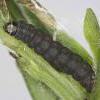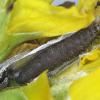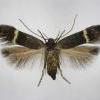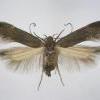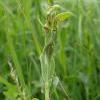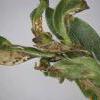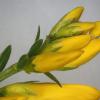35.006 Aproaerema vinella (Bankes, 1898)
Status and Distribution
This species was considered Extinct in the British Isles and Channel Islands until discovered at three adjacent sites on the Isle of Wight in 2013 and 2014. The distribution map shows a centralised grid for the Isle of Wight.
Formerly known from four or five localities in Sussex where it appeared to be fairly common considering the numerous specimens present in museum collections bred from at least one of the sites. The foodplant declined significantly as a result of changes in agricultural practice and the moth was last recorded in Sussex in 1990. Subsequent searches have failed to locate any signs of the species in this area.
Provisional map
Habitat
Formerly associated with rough fields on or very near Wealden clay. The locations on the Isle of Wight are unimproved neutral grasslands (fields) on heavy clay soils sympathetically grazed by cattle to maintain good conditions for the foodplant.
Finding the Moth
Larva: feeds between spun leaves near the tip of the plant, along the stem often mining them or occasionally within spun unopened flowers. The second brood larva overwinters full-fed within spun leaves, often fixed to the stem.
Adult: flight activity unknown.
Similar Species
This species usually lacks any pale forewing markings but occasionally can have small whitish-yellow costal and tornal spots or even a complete whitish-yellow fascia. The variation in forewing markings, wingspan (within the smaller range of other Aproaerema species) and its use of a foodplant possibly also utilised by A. cinctella make dissection essential to determine to species level.
In view of the species scarcity, confirmation of identification from any site (particularly a new location) is most sensibly achieved by retention of no more than a single voucher specimen.
In an article (Ent. Gaz. 1991: 227-230) R. J. Heckford notes the genitalia drawing of the female "vinella" in Pierce and Metcalf (1935) is of Aproaerema albipalpella.
Stated by some authors to have been single-brooded and by others as double-brooded, the latter being supported most recently in Vol. 4 (2) of the Moths and Butterflies of Great Britain and Ireland. In Europe it is double-brooded. The adults have been found in Britain from June to September.
Very few flight dates are currently on the Scheme database, most of the records referring to bred specimens.

